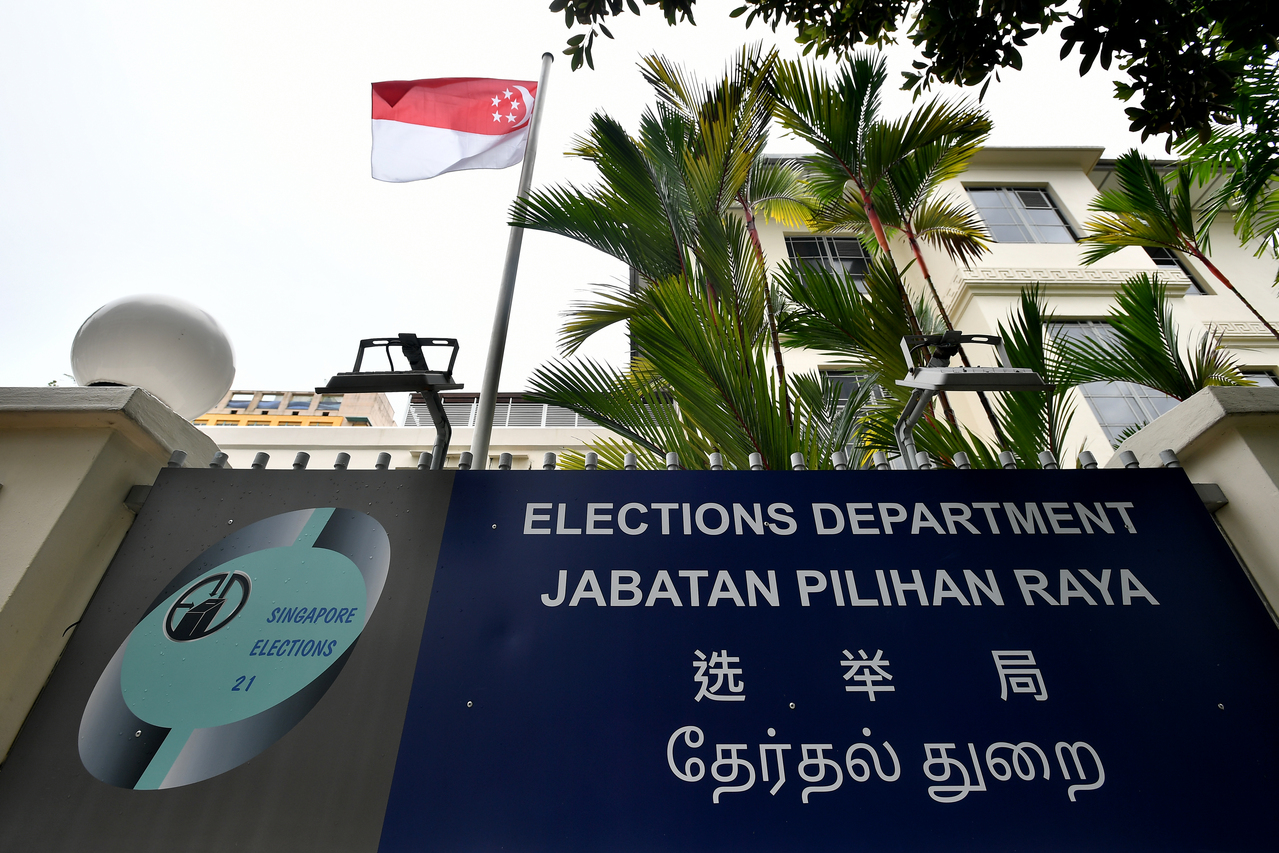$9.2 million spent by candidates on GE2020 campaign
Sign up now: Get ST's newsletters delivered to your inbox

The facade of the Elections Department Singapore on June 24, 2020.
ST PHOTO: LIM YAOHUI
Follow topic:
SINGAPORE - Candidates contesting this year's general election spent more than $9 million on campaigning, with the bulk of the money going towards posters, banners, flyers and online advertisements.
Parties also spent a total of just over $200,000 on "non-print election advertising", which can refer to the cost of designing say, a party's website.
Expenses submitted to the Elections Department (ELD) show the ruling People's Action Party spent a total of $6.97 million on the 93 seats it contested, while the 10 opposition parties and single independent candidate spent a combined sum of $2.19 million.
The total expenses mark a nearly 30 per cent increase over the sum in the 2015 polls, when candidates spent around $7.1 million altogether.
On Friday, the ELD opened its election expenses records for public inspection, with members of the media among the first to peruse the documents.
Although overall expenses rose this year, all candidates still spent significantly below the allowed maximum of $4 per voter.
The PAP was the biggest spender, chalking up $2.63 per voter. It was followed by the Workers' Party (WP) with $1.21, and Progress Singapore Party (PSP) with $1.19.
The PSP, which fielded the largest opposition contingent in its maiden electoral contest, was the biggest overall spender among all the opposition parties. Its 24 candidates, spread out over nine constituencies, spent a total of $781,275.
The WP came next, at $705,647. It contested 21 seats across six constituencies.
Peoples Voice and Red Dot United spent the least per voter, at 13 cents and 10 cents, respectively.
The sole independent candidate who contested single-seat Pioneer, Mr Cheang Peng Wah, spent $31,537 on his campaign, working out to $1.28 per voter.
There were 2,651,435 registered voters in the July 10 election.
Candidates are required by law to submit their election expenses, to ensure accountability and transparency in campaign finance.
But unlike previous years, candidates' expense receipts were not included in this year's records. These receipts have, in the past, thrown up interesting tidbits of information about candidates' spending habits.
In 2015, for instance, former Bukit Panjang MP Teo Ho Pin spent $9,160 on catered lunch and dinner buffets for his volunteers over the nine-day campaign period.
The National Solidarity Party team contesting Sembawang GRC also spent $1,125 on balloon clappers with the party's name on them that year.
Instead, this year's records gave an overview of candidates' spending in different categories, such as election advertisement, transport, and office rental and supplies.
A total of about $5.6 million was spent on print ads - most of which came from the PAP - compared with about $2 million on online ads.
The WP, despite its very successful social media campaign, did not spend any money on paid Internet ads, although it spent nearly $600,000 on print ones.
The Singapore Democratic Party, on the other hand, spent almost the same amount on paid Internet ads and physical ones. In all, it spent nearly $280,000.
"Social media is meant to complement what's happening on the ground rather than be a substitute," said Dr Mustafa Izzuddin, a senior international affairs analyst at management consultancy firm Solaris Strategies Singapore.
"I think what the parties have done is that they have kept the traditional method of campaigning, but added an online element."
Parties continue to give out flyers and brochures because they are something "tangible" that can be left with the voter, suggested law don Eugene Tan of Singapore Management University.
He noted the WP's election video clips were widely shared despite the its decision not to invest in paid Internet ads. This demonstrates the power of a good online campaign, said Associate Professor Tan.
"It's a very good learning point," he added. "It suggests you need something that will get people engaged and talking."
The expenses records are available for inspection for six months, until Feb 20 next year. A payment of $2 is required to inspect each candidate's returns.

